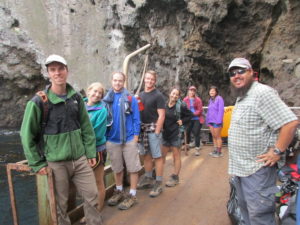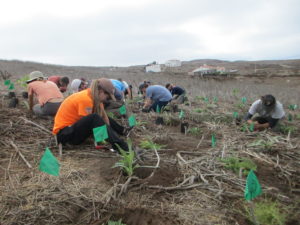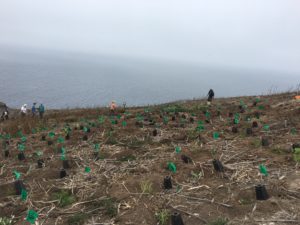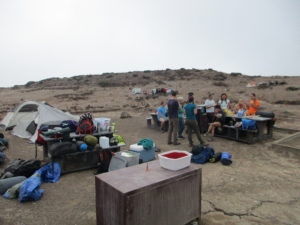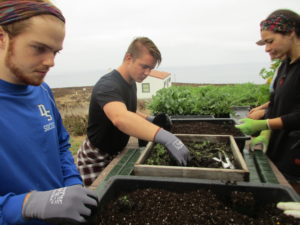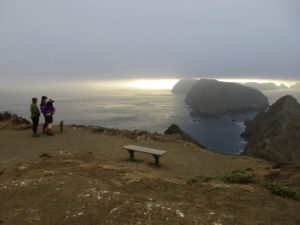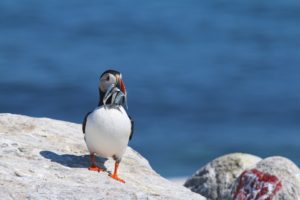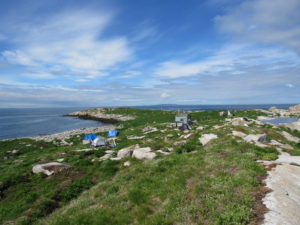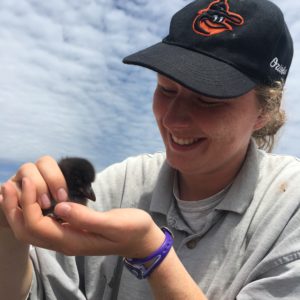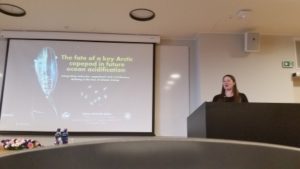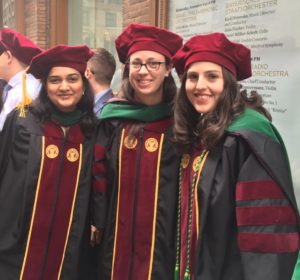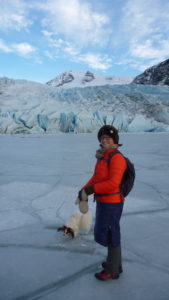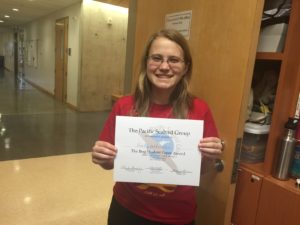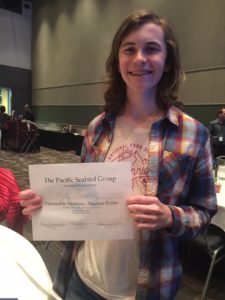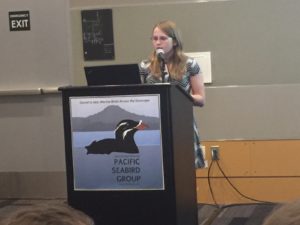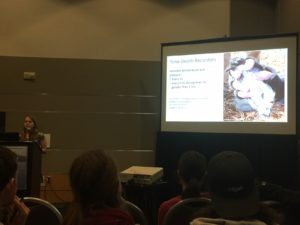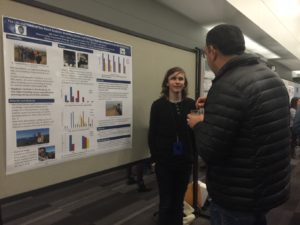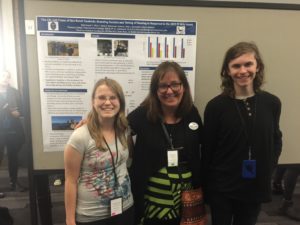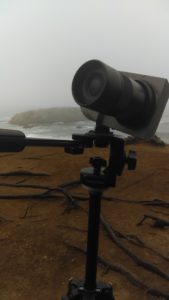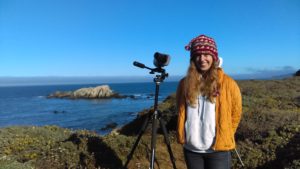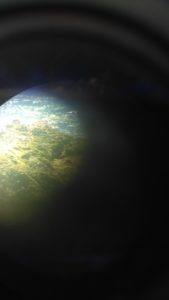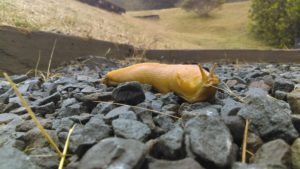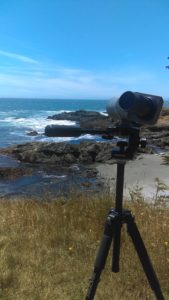Once upon a time, during the spring bloom, you could have looked out onto the Channel Islands from the Southern California coast and seen one island with what would have appeared to be a bright yellow halo around it. That island, Anacapa, is angelic no more. But let me back up a little.
A few weeks ago, my Advanced Animal Ecology class, led by the inimitable Professor Karnovsky, took an overnight trip to Anacapa Island, the second smallest of the five Channel Islands off the coast of Southern California. This was no jet-setting island adventure, however. While on the island we volunteered with three Channel Island National Park biologists who work to study and conserve the island’s wildlife. It is one of these biologists who first told me of the island’s long since lost halo.
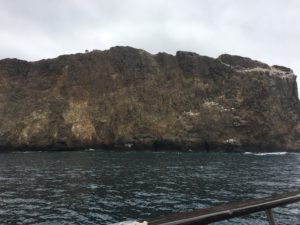
Our initial approach to Anacapa. If you squint your eyes you can just see the yellow ha… ah never mind.
It turns out that the island no longer look the way it did a couple of hundred years ago. The halo effect was the result of dense coverage by a large shrub called giant coreopsis that has lots of bright yellow flowers when it blooms. But when humans introduced sheep and later rabbits to the island, the giant coreopsis was devastated by the grazing of these introduced species. Today, many species of vegetation once common across the island have become rare, as the dominant plant has become red-flowered ice plant, an invasive species planted by the Coast Guard. These endemic (native) island species (plant and animal) are often particularly susceptible to being decimated by introduced species such as sheep and ice plant, as they have often evolved in an ecosystem without significant competition or predation.
This vegetation has serious implications for the numerous organisms that depend upon the island. The protected area beneath the native shrubs that once dominated on the island offered quality nesting sites for sea birds such as the Scripps’ murrelet, which cannot nest under the low-lying ice plant. On Anacapa in particular, whose sea birds only just recently were able to recover following the removal of yet another human-introduced invasive species, the black rat, the mending of the island’s vegetation in favor of native shrubs is vital to bringing the island back to previous levels of viability for the numerous organisms that live on it. This is where Anacapa’s resident biologists and my class come into play.
Upon arriving at the island we met with the three resident biologists, Jim, Amelia, and David, who introduced us to the island and to one of their projects: restoring native plant species to the island. Using a small greenhouse as a nursery to grow seedlings of various native shrubs, the biologists then plant those growing shrubs in patches, so as to begin to the restoration of areas of native vegetation. This is precisely what my class and I did for our first afternoon on the island. As we planted we learned that the island’s native subspecies of deer mouse has been eating many of the shrubs they have been planted, due in part to a mouse population boom resulting from good rainfall in the last year. While I am not particularly fond of mice, being slightly phobic towards anything with buckteeth, hantavirus, and a tail, these mice are native to the island, and we hope that with more and more vegetation restoration, they will become a less prominent issue.
After a much needed hop into the ocean for some snorkeling, we cooked dinner with Jim and Amelia (David rotated back to the mainland) and got some much-needed sleep. The next morning we met up again with Jim and Amelia and spent several hours working in the nursery, helping to transfer growing seedlings into individual nursery pots in which they could continue to grow before being planted. After lunch and another swim, we toured the lighthouse and lined back up for our ride home. Bouncing over the waves on our way back to Ventura Harbor, I think we all felt much increased appreciation for three things. First, the biologists who spend their lives working to maintain and restore the health of the Channel Islands ecosystems. Second, the importance of being ever vigilant in the maintenance of those fragile ecosystems and the devastating impacts of introduced species. And third, the extraordinary amount that some unskilled volunteers can accomplish to help both those biologists and the islands they tend to.
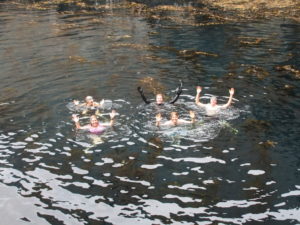
Clockwise from top left: Katie, me, Clark, Jack, and Prof K. We were able to swim and snorkel in the water of the boat dock. They were all very jealous of my wetsuit.
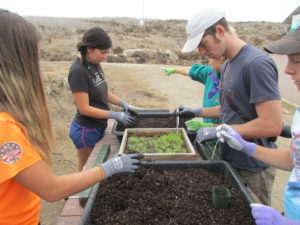
Part of the class helping to transfer seedlings into their own pots on our second day on the island.

